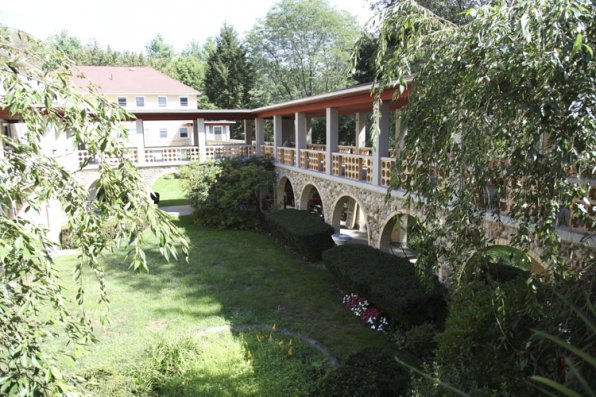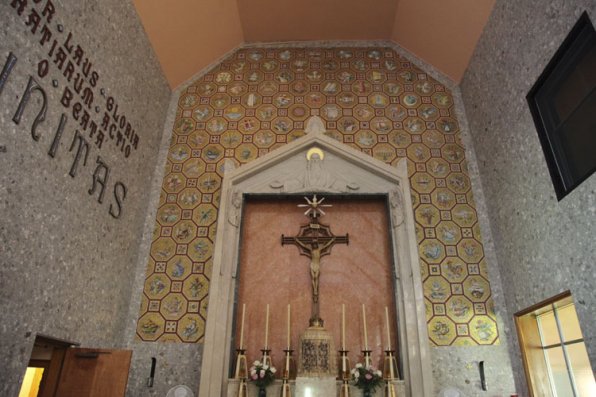Stepping onto the grounds of the Carmelite Monastery on last week, we weren't quite sure what to expect. Would the place of worship on Pleasant Street be a place so stuffy we'd be afraid to sneeze, or would we see nuns running around, shimmying and praising Jesus like Whoopi Goldberg in Sister Act?
Neither, as it turned out. Once inside, we were greeted by Sister Claudette Blais, a woman with a firm handshake and a soft voice. She joined the Carmelites in 1961, at the age of 22.
Asked what the monastery was all about, Sister Claudette got into some pretty weighty topics.
“It has to do with the mystery of God, love and history of the human person,” she told us. “That's what this life is all about. We are women who have somehow been touched by God and called upon to enter a journey and live a specific way of life.”
That way of life, Sister Claudette explained, requires the nuns to forfeit having a husband, family, a job. They live lives of solitude in harmony with one another, which they believe bring them closer to God.
But the nine nuns who live at the monastery aren't totally disconnected from the outside world. They read newspapers, can watch television and surf the internet to keep up on current events. They believe if they know what's going on in the world, their prayers can help people outside the monastery walls.
“We believe that the way we live provides a source of greater healing for society,” she said.
The nuns can leave the property, but mostly they stay in. Someone does the grocery shopping each week; they can go to medical appointments and attend meetings. They eat cereal and tend to their gardens, Sister Claudette said. Some wear habits, some don't.
“It's cloistered life,” she said. “We can leave, but by and large, we stay put. We don't just go out on a Saturday night.”
Life in the monastery also involves a lot of reading, studying and reflection, she said. And there's a lot of praying, but not always in the traditional sense.
“To live a life of prayer doesn't mean we say a lot of prayers. It means we listen attentively to God's presence.”
The story of the Carmelites goes back nearly 1,000 years, when a group of monks got together and decided they'd begin a monastery on top of Mount Carmel in Palestine. They lived in the caves of the mountain for about 100 years, until they moved to Europe and found more comfortable digs. Women began joining the order in the 1400s, and in 1719, a group of them came to Baltimore. Eventually, a sect moved to Boston, and in 1946, to Concord in a house on the corner of Loudon and Airport roads.
The Pleasant Street property was built in 1956, and the nuns have been there since. An electrical fire forced the nuns out for about six months in the early '90s, but they found refuge at Saint John's Church in Concord and were able to stay together until the building was repaired.
If a woman wants to become a nun, there's a long integration process. First, the sisters invite her to live with them for three months to see if she's the right fit. If she is, she'll spend two years as a novice, and then another three years making her vows.
These days, women are entering the order much older than they did back in the day. The ages of the nuns in Concord ranges from 50 to 87.
“This life has some limitations, so we need people with life experience, maturity and education,” Sister Claudette said.
The women of the Carmelite are drawn to the sisterhood for many reasons, Sister Claudette said. Growing up, certain images and symbols – photographs of nuns wearing dark veils, for example – called to her. The mystery of the sisterhood fascinated her.
“It's like God pursues you; it's like a love affair,” she said. “I just felt drawn to come to a life where I would give myself to God in this way.”










